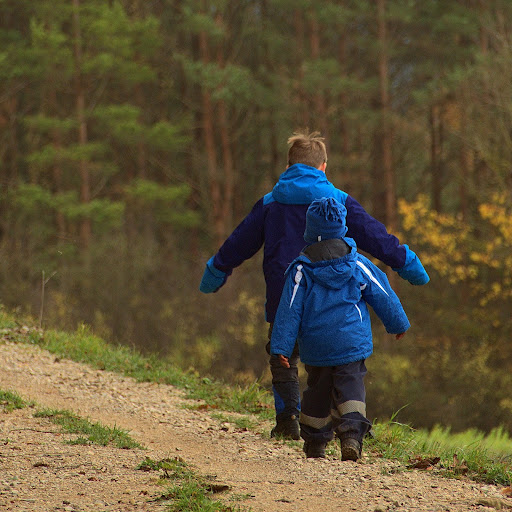
We try to protect our youth from everything that could harm them physically, emotionally, and psychologically. But unfortunately, many children will have at least one adverse childhood experience (ACE) in their life.
An ACE is any event deemed traumatic in childhood. Witnessing a shooting or stabbing, which 30% of children do in inner cities, is an example of an ACE. Bullying, physical, and sexual abuse are common examples of ACEs too.
If we don’t help children heal from ACEs, they’re more likely to have run-ins with police in their teenage years. And soon after, they may grow into adults who foster destructive behaviors like alcohol and drug abuse, self-injury, and binge eating.
How can we accelerate the healing process for children who have experienced ACEs? It’s possible to see positive effects from immersing them in nature. Nature can be compelling in helping children get to the other side of childhood trauma.
Improve Mental and Physical Health
Improving their mental and physical health is the first on the list of ways nature inspires healing in children with ACEs.
Experiencing something as traumatic as abuse or losing a family member at an early age can alter brain development. ACEs can worsen depression and anxiety and incite post-traumatic stress disorder (PTSD). These events are also linked to chronic physical health conditions, like diabetes and heart disease.
Nature can be beneficial to both mental and physical health. Simple outdoor activities like taking a walk or bird watching have been proven to reduce stress, soothe anxiety, and decrease the risk of depression.
Not only that, nature-related activities keep us moving, which does wonders for our physical health. So, engaging a child in nature can help them work through the adverse effects on their physical and mental health prompted by ACEs.
Develop a Better Relationship With Self
ACEs can make a child’s self-esteem plummet. In addition, many children unfairly put the blame on themselves. They may think their ACEs are their fault and that they could’ve done something to prevent them. As such, they may go through life being less than loving to themselves.
Spending time in nature can help children learn to love and take better care of themselves.
They have an opportunity to see how nature evolves despite harsh environmental conditions. They can learn that this is something they can do, as well — as long as they give themselves the care and love they provide the plants and wildlife they’re looking after.
Build Trust With Adults Again
One of the saddest things about ACEs is that children usually experience them because of an adult in their life. When a child goes through an ACE because of a parent, teacher, or another adult figure, it can ruin the trust that the child once had in adults.
Adults are a part of any child’s healing process. So, as adults and children grow stronger relationships through nature walks, camping trips, and outdoor sports activities, they have a chance to heal the broken trust they have with adults.
Reintroduce the World as a Safe Place
ACEs can make a child feel like the world is the most unsafe place to be in. Of course, it’ll take time to help them feel like the world is secure and supportive again, but immersing children in nature can help facilitate this process.
Nature is so vast that children may be afraid to explore because they’ll get lost in it. Showing them how to safely engage in nature’s grandness can help them feel like this big world isn’t something to be afraid of. Giving them small goals to conquer, like setting up a tent and starting a campfire, can mean the world to them and show them their worth.
Two Tips for Introducing Nature to Children With ACEs
For nature to be as impactful as it can be in a child’s healing process, trusted adults must be their guide and ally. These two things are helpful when introducing children with ACEs to nature’s healing powers.
Find out their outdoor interests
“Getting involved in nature” means different things to different kids. Nature’s role in their healing process will be much more impactful when you do the outdoor activities your child is interested in.
Sit down with them and talk about their outdoor interests. What about nature interests them? What outdoor activities intrigue them? If they can’t think of anything off the top of their head, provide a list.
For example, let’s say your child isn’t interested in nature walks or discovering new animals but is open to outdoor sports. In that case, help them sign up for the outdoor sport they’re most interested in.
If they start to take a liking to participating in an outdoor sport each season, accommodate that the best you can. Don’t worry about all the equipment that comes with these sports, as it’s easy to store seasonal sports items in sheds or garages via bins, shelves, and closets until the sport rolls around again. The organizational effort is worth it so long as your child gets the support they need to heal.
Connect them to nature as things are happening
Many children struggle with behavioral issues due to their experiences with traumatic events. These behavioral issues can include:
- Impulsivity;
- Mood swings;
- Angry outbursts;
- Inability to focus;
- Defiant behavior;
- Violent behavior toward others;
- Inability to socialize appropriately.
Connecting a child to nature while going through the above situations can help their healing process. For example, instead of punishing your child for an angry outburst, you can have them tend to their garden or any outdoor animals they have adopted in this process. This will help calm and bring the nurturer out of them. So now, instead of working through their anger in an unhealthy way, they learn to channel that energy into something positive for themselves and the environment.
Moving Forward
Children with ACEs need support to heal from ACEs and start to cope in healthy ways. They need you and other trusted adults to guide them on their journey. Encourage the children you’re working with to try various nature-related activities. Then, compile a list of their favorites so that you can make them a regular part of their day and, ultimately, their healing process.






